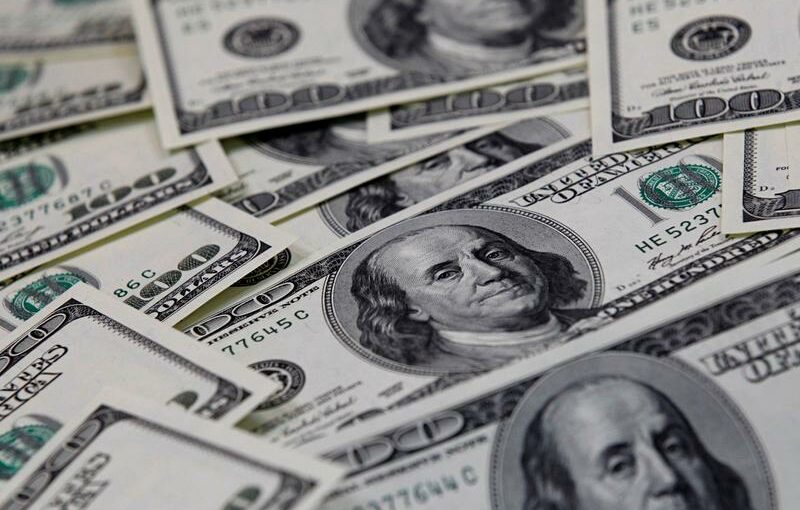LONDON (Reuters) – Inflation-adjusted government bond yields are rising and so is pressure on Fed and ECB policymakers to somehow tamp down the increase before it wrecks the economic recovery they have carefully nurtured with enormous amounts of money-printing.
Sovereign yields have risen this year as prospects for U.S. fiscal stimulus and the COVID-19 vaccine rollout lifts growth and inflation prospects, a move that’s now spilled over into so-called real yields — borrowing costs adjusted for inflation.
Stock markets until recently shrugged off the bond selloff, possibly viewing it as a reassuring sign of economic improvement. But the subtle shift that’s now underway is one neither they nor policymakers will welcome.
Thirty-year real U.S. Treasury yields rose above 0% on Friday for the first time since June and 10-year real yields rose 20 basis points (bps) last week.
The selloff has even engulfed Europe, despite its lagging recovery and weak inflation, with Germany posting a 26 bps real 10-year yield increase last week — the biggest in almost a year.
Worse still, real yield rises are outpacing nominal yields in both Germany and the United States. Essentially, market expectations of future inflation are falling at the same time that borrowing costs rise.
The result is a tightening of financial conditions — a negative for economic growth.
(Graphic: German and US real yields: )
“If I were a policymaker I would be very concerned,” said Charles Diebel, head of fixed income at Mediolanum International Funds.
“If real yields rise enough you suddenly have a pretty significant tightening in financial conditions and all the easing, monetary and fiscal, comes to naught.”
This may already be happening. A global financial conditions index compiled by Goldman Sachs has ticked to its highest in about a month.
(Graphic: Financial conditions tightening: )
A liquidity index from CrossBorder Capital tends to fall 12 index points for every 100 bps rise in real yields, according to the consultancy’s managing director Michael Howell.
So this year’s move implies a $2.5 trillion decline in liquidity — around 1.5%, Howell estimates.
European Central Bank chief Christine Lagarde on Monday broke policymakers’ silence on the subject, saying she was “closely monitoring” the rise. Federal Reserve Chairman Jerome Powell has meanwhile promised accommodative policies will stay in place for “some time”.
(Graphic: Yields and inflation: )
Real yields matter because they, rather than nominal bond yields, represent the real cost of capital and hence exert a greater impact on borrowing costs for governments, companies and households.
They also determine the premium investors earn by holding equities over bonds — it was a 100 bps real yield jump that fuelled the market “tantrum” of 2013.
This may explain why the S&P 500 on Monday posted the longest losing streak since last February and Bitcoin is down 12% this week.
“The real yield move is going to be a real test of this market environment, especially in some of the riskier asset classes, where we saw low real yields used as a justification for very high valuations,” said Ross Hutchison, a fund manager at Aberdeen Standard Investments.
Markets seem reluctant to accept assurances. Lagarde’s comments did not prevent euro zone yields from rising further on Tuesday, while New Zealand’s borrowing costs rose despite dovish central bank commentary at Wednesday’s policy meeting.
“REAL” PAIN FOR ECB
Of course real yields are still low and the rise may not be sustained as inflation remains dormant in most major economies.
But if the Fed can at least take comfort from signs of U.S. economic recovery, the ECB has clear reason to be concerned.
While analysts are upping U.S. growth expectations, the European Commission has cut forecasts for this year’s euro area growth to 3.8% from a previous 4.2%.
The question is what central banks might do.
They could expand bond buying or adopt yield curve control — pinning down yields on bonds of a particular maturity.
Danske Bank chief strategist Piet Haines Christiansen says the ECB could contain rising real yields by stepping up the pace of asset purchases. Of its 1.85 trillion euro emergency bond purchase programme, 855 billion euros have been used so far.
Christiansen says it remains unclear whether the real yield rise which he measures using the five-year, five-year euro swap rate will go further, as he expects the ECB to step in.
“But from a risk perspective, if this feeds through to the real economy, which it eventually will if this is not counterweighed by ECB, the ECB has to do even more,” he said.
Eventually, the ECB may have to follow the Fed in revising its inflation targeting framework — essentially clarifying it will keep policy loose even if inflation surpasses targets, Morgan Stanley chief economic adviser Reza Moghadam reckons.
(Graphic: The ECB’s pandemic stimulus programme: )
Source: Read Full Article
